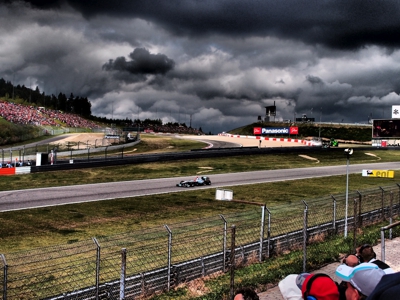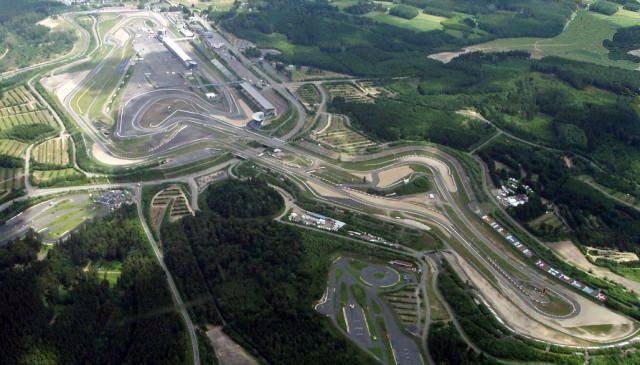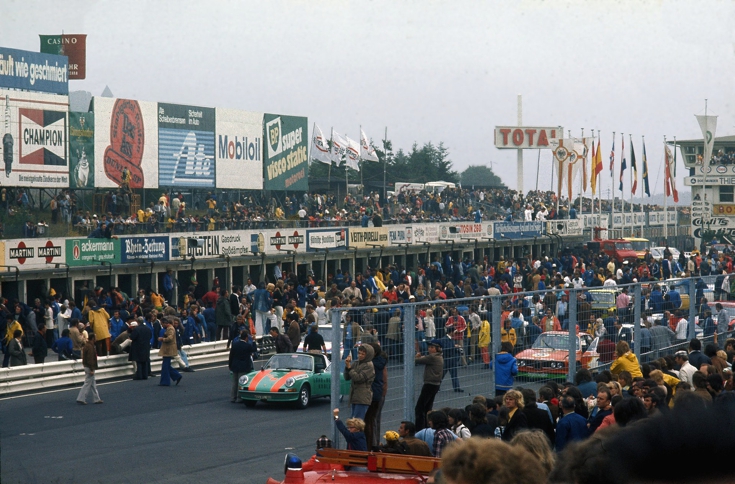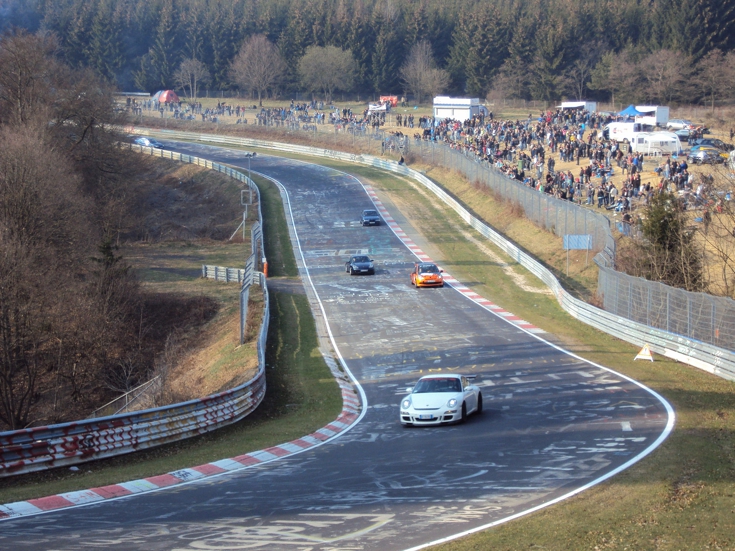German Grand Prix: Nürburgring

There are few more iconic racetracks in the world than the Nürburgring. Situated just outside of a town called Nurburg, the place is about as motorsport crazy as you are going to find. What you will find is that the Nurburgring is one of the most accessible racetracks in the world. Allowing the general public to drive around it in their everyday cars.
The grand prix at track was run there up until 2014 where an agreement with Hockenheim to alternative between each track for the European Grand Prix fell through. Held in the summer months, weather was often fine, but a chance of rain at the venue was always ones that drivers and fans in particular relished on the tight track.
Jump to: Circuit Info | Track Layout | History
Map
Circuit Info
| Location | Length | Corners | Capacity | Year Opened |
|---|---|---|---|---|
| Nürburg | 5.148km | 17 | 150,000 | 1927 |
Circuit Layout

Measuring 5.148km the Grand Prix track is probably the most polished section of the course. By this we mean that the full 20.81km Nordschleife and the 25.947km combined circuit are about as long as you will find anywhere in the world.
The track kicks off with a long pit straight and sprint down to the first corner, known as the Yokohama-S. This is one of the best over taking sections on the course as you come through a fast straight into a tight turn. In years gone by, this section of the course through turns 2, 3 a dn4 were very different, but the sweeping left handers, in the 90-degree right hander at 4 offers up a tricky start for the drivers.
The straight between turn 4 and 5 is another area where the cars can stretch their legs, with turn 5 being taken at great speeds before a slightly slower, yet sweeping left hander at turn 6. Cars power out to turn 7 in a wide hairpin turn before coming to the two fastest corners on the track in turn 8 and 9, also known as Michael Schumacher S.
Turn 10 requires hard breaking and then again at turn 11, known as Warsteiner-Kurve. Another fast part of the track takes drivers through turn 12, before hard breaking into 13 makes for another very popular overtaking spot. A good line out of 14 and into the final corner of 15 gains momentum heading down the pit straight and across the finish line.
Other Races at Nürburgring

One of the most unique things about ‘The Ring’ is that the other series of races that it includes is quite staggering. The firs thing, as we have mentioned, means that members of public can come and drive. But, a lot of manufactures pay to have the track closed to come and do secret testing for new cars. Often the bigger manufacturers battle out for the prestigious tittle of fastest around the Nürburgring for their class of car. For example, most recently the new Alfa Romeo Stelvio Quadrifoglio just broke the record for fastest SUV around the track.
Other races that have taken place at some time or another include German Grand Prix, European Grand Prix, Luxembourg Grand Prix, International Formula 3000, GP2 Series, 6 Hours of Nürburgring, 24 hours of Nürburgring, BPR Global GT Series, GIA GT Championship, FIA Sports car Championship., European Touring Car Championship, World Touring Car Championship, German Motorcycle Grand Prix, Superbike World Championship and the UCI Road World Championship (Cycling).
History

The Ring has actually been about in some form since 1925, which makes it one of the oldest tracks in the world. It’s also had the length that has made it so famous, although back then it measured a whopping 28.265km, some 3km longer than the current track.
The Track
The Grand Prix track didn’t come into fruition until 1984 and it was seen a huge success as an extension of the main track. The surface was obviously different, being made from asphalt, rather than a mix of asphalt and concrete that can be found on the main ring.
But, whilst the organisers were proud, the public weren’t so and the fact that it offered very few decent viewing points didn’t go down too well. In fact, many of the locals refused to call it the Nürburgring and instead named it Eifering, which roughly translates as a replacement. The track also offered very few overtaking spots as well, which meant races were pretty dull unless the weather stepped in to mix things up a bit.
Changes
The track saw a number of changes in 2002 in order to try and increase excitement and overtaking. But, ultimately the changes proved in vein. Whilst the Nürburgring was actually seen as a popular spot of the drivers, many refereeing to it as one of the classics, the reality was that an increase in ticket prices due to rising license costs meant that people were staying away and as a result, in 2013 they hosted the last of their European Grand Prix’s to date.

